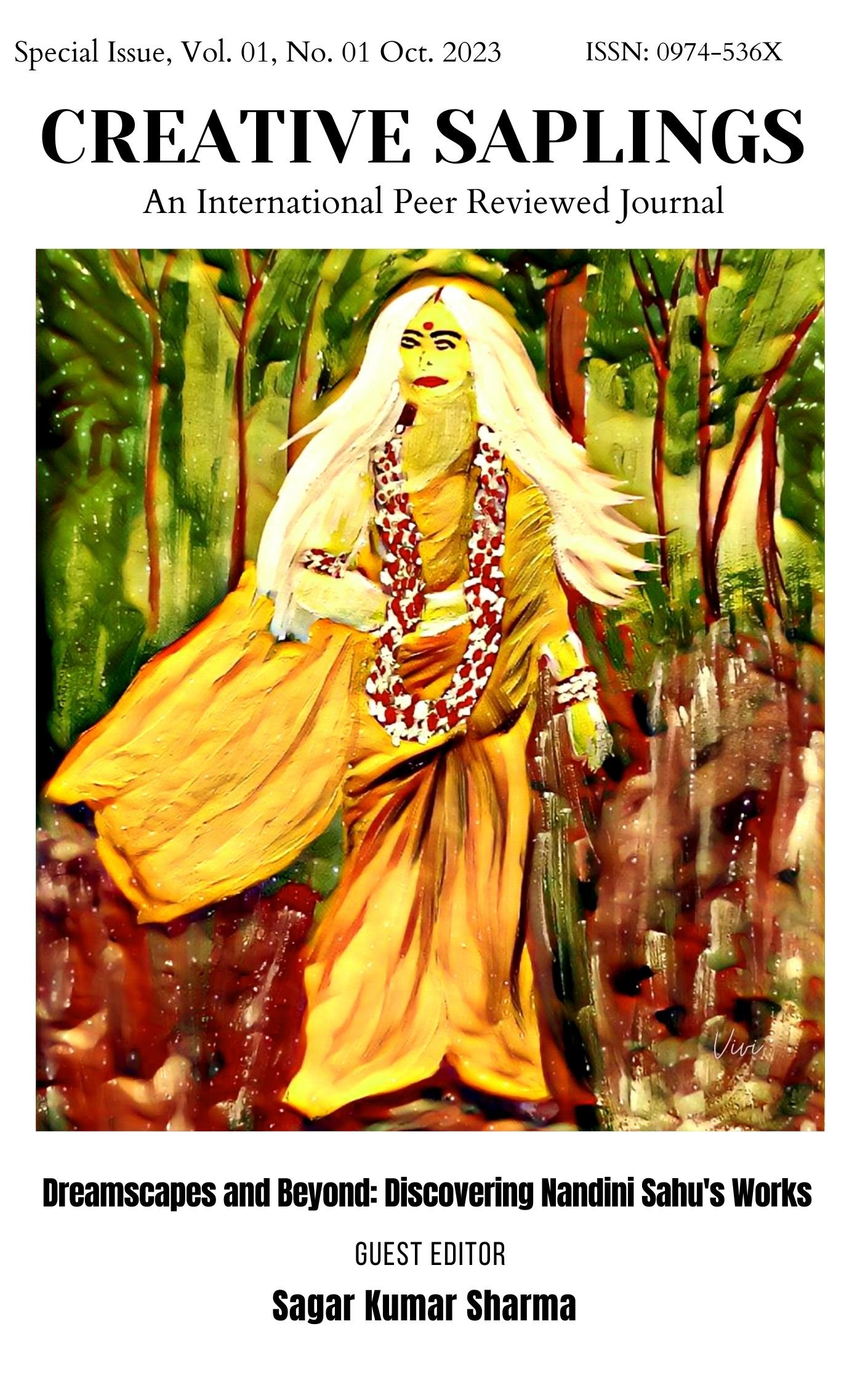Sita’s Story: Intertextuality and Folkloric Allusions in the Creation of a Desi Feminist Discourse in Nandini Sahu’s Sita
DOI:
https://doi.org/10.56062/gtrs.2023.1.01.410Keywords:
Ramayana, Sita, Intertextuality, Feminist Discourse, folklore, Desi.Abstract
The story of Sita in the Indian epic Ramayana has over time been subject to several transformations, reinterpretations, and recontextualization. Sita the fiercely dedicated wife of Lord Rama has evolved to become a woman protagonist and, in some cases, even a feminist idol. Although there have been several modern interpretations of the Ramayana, Nandini Sahu’s Sita composed as a poetic memoir running into 25 cantos, in its form, content, and context is situated in a liminal space between the real world and the mythical world. This liminality is otherwise referred to as the “permeable membrane” in the words of A. K Ramanujan provides scope for many voices to emerge; from orality, from marga and desi mediums all of which oscillate between the temporal zones of the past, present, and future, constantly engaging with one another. Furthermore, the figure of Sita and her narratives extend to what Sahu refers to as the “Sitaness” in every woman whose agency has been snatched. For instance, she yokes together women protagonists from the Literary domain such as Desdemona, mythical namely, Trijada, and historical such as Meerabai, Mother Teresa, Kalpna Chawla, and even Nirbhaya respectively to create a uniquely Indian feminist discourse highlighting various instances of injustice meted towards women. Moreover, the poem is crafted using self-reflexive storytelling inspired by oral tradition and folklore. It also implements multilayered intertextual allusions to reimagine Sita as a woman protagonist transcending time and space. Therefore, this paper will investigate the intertextual and folkloric allusions in Nandini Sahu’s Sita consequently exploring the relevance of this composition as a contribution towards the creation of a desi-feminist discourse.
Downloads
References
Sahu, Nandini. Sita. The Poetry Society of India, Gurgaon 2014.
Gokhale, Namita. In Search of Sita: Revisiting Mythology. Penguin UK, 2009. Sattar, Arshia. Uttara: The Book of Answers. Penguin Books Limited, 2016.
Sattar, Arshiya. Valmiki’s Ramayana. HarperCollins India, 2019.
Ramanujan, A. K., et al. The Collected Essays of A.K. Ramanujan. Oxford University Press, 1999.
Prakash, Brahma. “Epic as an Ideology of the Nation Empire: Dominance, Hegemony, and the Imperialist Repertoires of the Ramayana Traditions in India.” Prabuddha: Journal of Social Equality, vol. 7, no. 1, 2023, pp. 52–78.
Kristeva, Julia. “Word, Dialogue and Novel.” The Kristeva Reader, edited by Toril Moi, Columbia University Press, 1986, pp. 34–59.
Das, Sisir Kumar. “Epic History Hagiography.” A History of Indian Literature, 500-1399: From Courtly to the Popular, Sahitya Academy, 2005.
Devy, G. N. After Amnesia- Tradition and Change in Indian Literary Criticism. 3rd edition, Orient Blackswan, 2017.
Richman, Paula, editor. Many Rāmāyaṇas: The Diversity of a Narrative Tradition in South Asia. University of California Press, 1991.
Richman, Paula, ed. Ramayana Stories in Modern South India: An Anthology. Indiana University Press, 2008.
Allen, Graham. Intertextuality. Routledge, 2000.
Basu, Tapan. “Nandini Sahu’s Sita: A Poem.” Creative Saplings, vol. 1, no. 11, Feb. 2023, pp. 4–7. creativesaplings.in, https://creativesaplings.in/index.php/1/article/view/216.

Downloads
Published
Issue
Section
License

This work is licensed under a Creative Commons Attribution-NonCommercial-NoDerivatives 4.0 International License.




